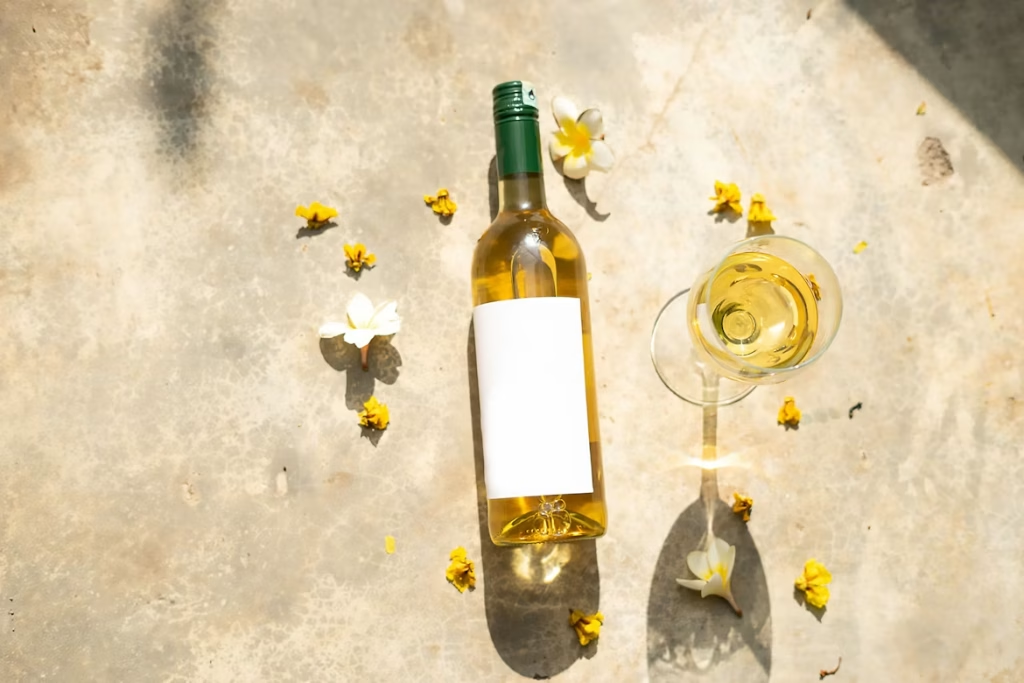A dinner party isn’t just about food — it’s an experience. The right flowers can shape the mood, tie together flavours and aesthetics, and make your guests feel as though they’ve stepped into a scene you’ve curated with care. Just like pairing wine with a meal, pairing flowers with food is about harmony, contrast, and story. It’s about creating a sensory rhythm where colour, scent and taste all play their part.
Here’s how to design a floral atmosphere that complements your menu — from bright lunches to moody winter feasts.
Start with the mood, not the meal
Before you think about which flowers or wines to use, ask: What kind of evening am I creating?
Is it a casual garden gathering? A candlelit dinner for six? A spring-inspired brunch? The tone determines the arrangement’s scale, colour palette and scent intensity.
- Light and fresh menus (salads, seafood, citrus desserts): Think airy and herbal — soft greens, whites and delicate textures.
- Rich, savoury dishes (slow-cooked meats, pastas, roasts): Go deep and moody — velvety blooms, warm reds, plums and burgundies.
- Seasonal produce-driven menus: Mirror what’s on the table — spring bulbs, summer wildflowers, autumn foliage or evergreen sprigs.
When in doubt, simplicity is elegance: one colour family, a few textures, and a loose, organic shape that doesn’t dominate the table.
How to pair flowers and wine
Wine pairing is about balance — acidity with sweetness, weight with lightness. Flowers follow the same logic.
For crisp whites and sparkling wines
Pair with clean, bright blooms: white tulips, freesias, lisianthus or chamomile. Add touches of mint or rosemary for subtle fragrance. These flowers echo the freshness of Sauvignon Blanc, Prosecco or Pinot Grigio.
For full-bodied reds
Think depth and contrast: dark dahlias, burgundy roses, native banksias or proteas. Their richness matches Shiraz, Cabernet or Tempranillo. Avoid overly fragrant flowers, as they can compete with the wine’s aroma.
For rosé and lighter reds
Rosé calls for playfulness. Pair with pastel-toned blooms — blush roses, ranunculus, peonies, or dried grasses. These create a romantic, easygoing aesthetic, ideal for summer evenings.
For dessert wines
Florals with sweetness or whimsy work beautifully — orchids, lavender, or jasmine. The light scent and refined appearance pair naturally with the indulgence of dessert.
The art of tablescaping
Your table is a landscape — each element should guide the eye without overwhelming the senses.
- Keep arrangements low. Guests should see each other easily across the table.
- Mix textures. Combine structured stems (like eucalyptus) with soft blooms for contrast.
- Layer natural elements. Think wooden boards, linen napkins, candles and sprigs of herbs tucked into place settings.
- Mind the scent. Strongly perfumed flowers (like lilies or gardenias) can interfere with taste. Use them sparingly or move them away from the main eating area.
For longer tables, small posies spaced evenly can feel fresher and more conversational than one large centrepiece.
Herbaceous accents: where food and florals meet
Herbs bridge the world of taste and scent — they’re the most literal connection between flowers and food. Try:
- Rosemary or thyme sprigs tucked into napkin rings — earthy and elegant.
- Mint, basil or lemon balm for summer parties; their freshness complements sparkling drinks.
- Lavender or chamomile in jugs of water or cocktails — subtly aromatic, not overpowering.
- Edible petals like violas, nasturtiums or rose petals for garnishing desserts or salads.
You don’t need to be overly thematic — just a few hints that tie the floral and culinary elements together make a big impact.
Seasonal inspiration
Spring:
Tulips, daffodils, freesias and sweet peas — light, joyful, and paired with crisp rosé or sparkling wine. Perfect for seafood and citrus menus.
Summer:
Sunflowers, dahlias, zinnias and wildflowers — big, expressive colours. Works well with barbecues, grilled vegetables and cold whites.
Autumn:
Roses, chrysanthemums, native banksias — warm tones and structured arrangements. Pair with full-bodied reds and earthy dishes.
Winter:
Anemones, hellebores, dried arrangements with evergreen foliage — deep and introspective. Pairs beautifully with rich reds, chocolate desserts and candlelight.
The finishing touch
At its best, a dinner party feels like time has slowed down — everyone is talking, laughing, and sharing something ephemeral. Flowers help hold that space. They soften the edges of the evening, set the tone, and linger in memory long after the plates are cleared.
If you’d like help designing a floral setting that feels perfectly attuned to your menu, B&M Florist can help craft arrangements — from minimalist posies to dramatic seasonal centrepieces — that bring your table to life.
Visit us in store or online to explore fresh flowers and styling ideas for your next dinner party.



